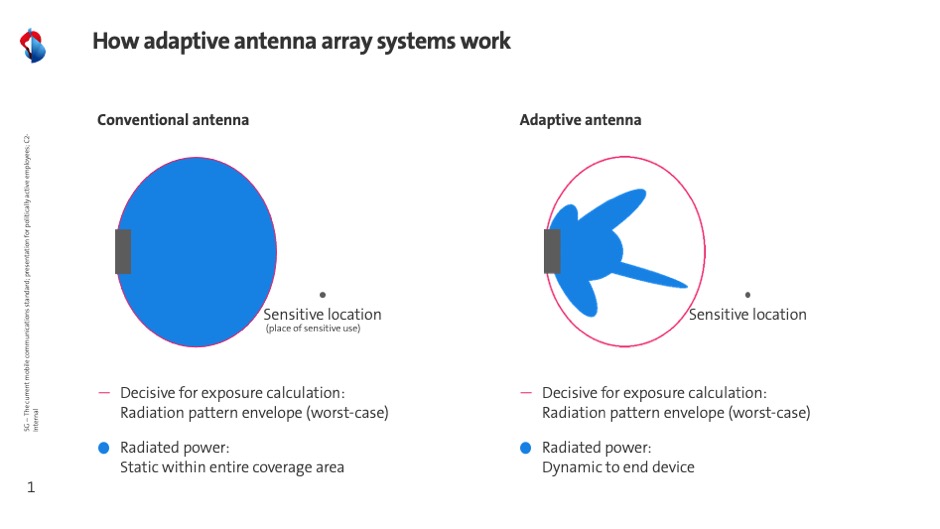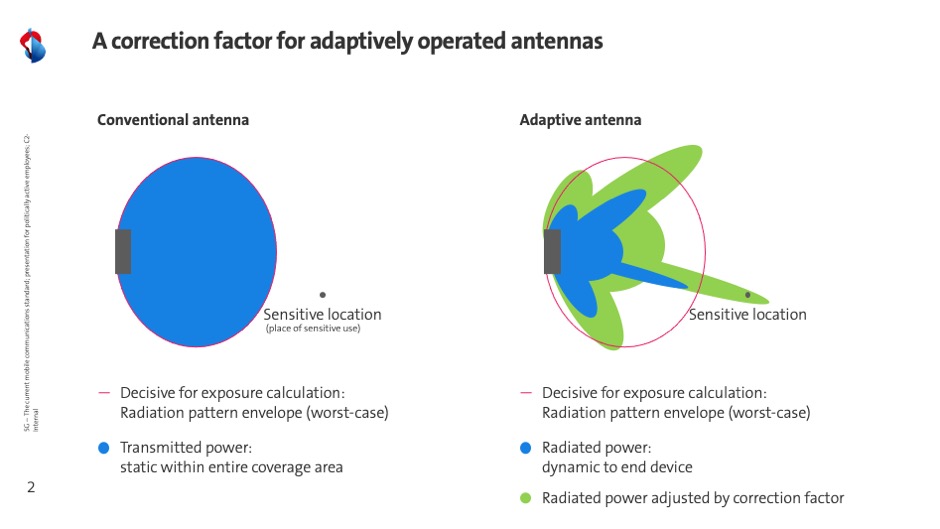The correction factor may locally, in a place of sensitive use, and for an extremely short period, result in the extrapolation of field intensities in excess of 5 V/m (see green area in the right-hand graphic). Averaged over 6 minutes, the stringent precautionary installation limit value, which has been in place unchanged for 20 years, must be adhered to at all times, however. Due to the extremely dynamic way in which adaptive antennas work, this is automatically the case in 95 to 98% of use cases owing to statistical distribution. To ensure that the precautionary value is always adhered to even in the remaining cases, validated software continuously monitors the radiated power of the antenna. This automatic power control provides additional quality assurance and guarantees the lawful and compliant operation of all installations.
In other words, adaptive antenna array systems also comply with the extremely stringent installation limit value at all times, as Federal Councillor Sommaruga, Head of the Federal Department of Environment, Transport, Energy and Communications, explained to the media. The installation limit value is now also averaged over time, as has always been the case with the ten times less stringent exposure limit value. The exposure limit value applies to places where people remain for only a short period of time.


